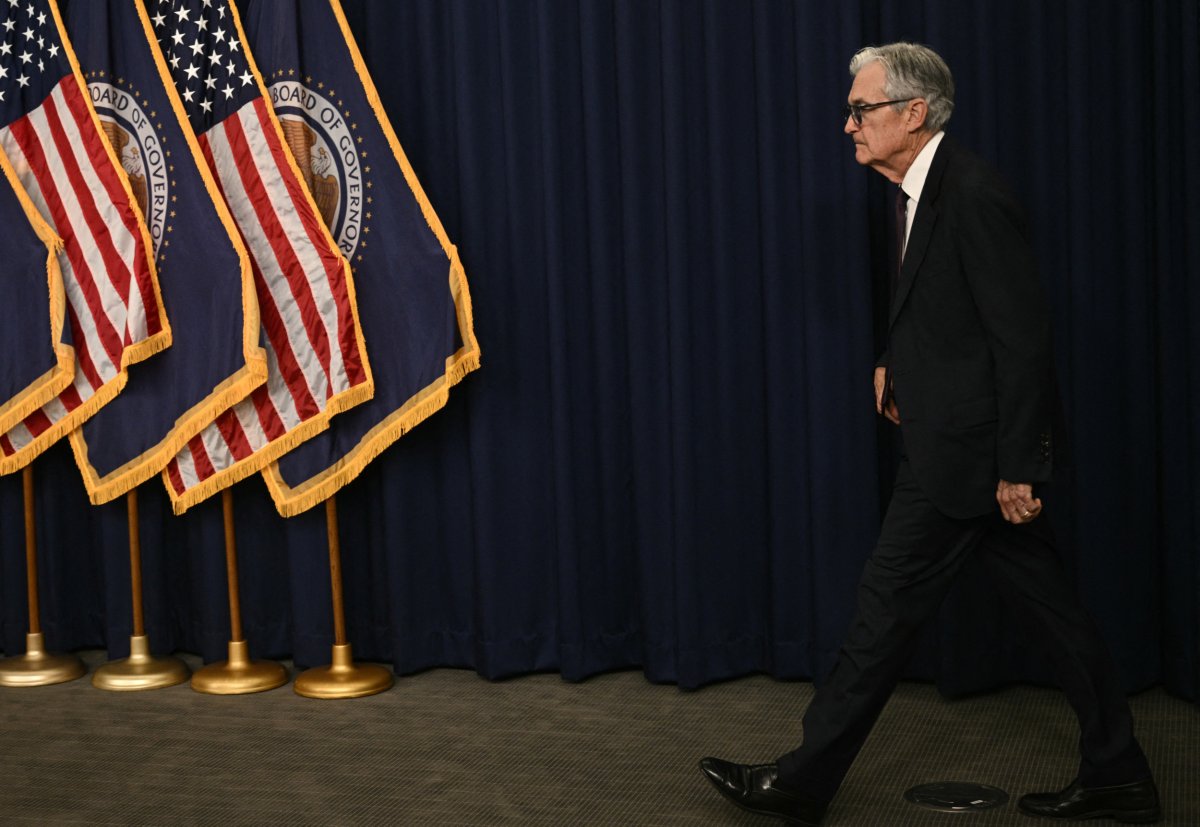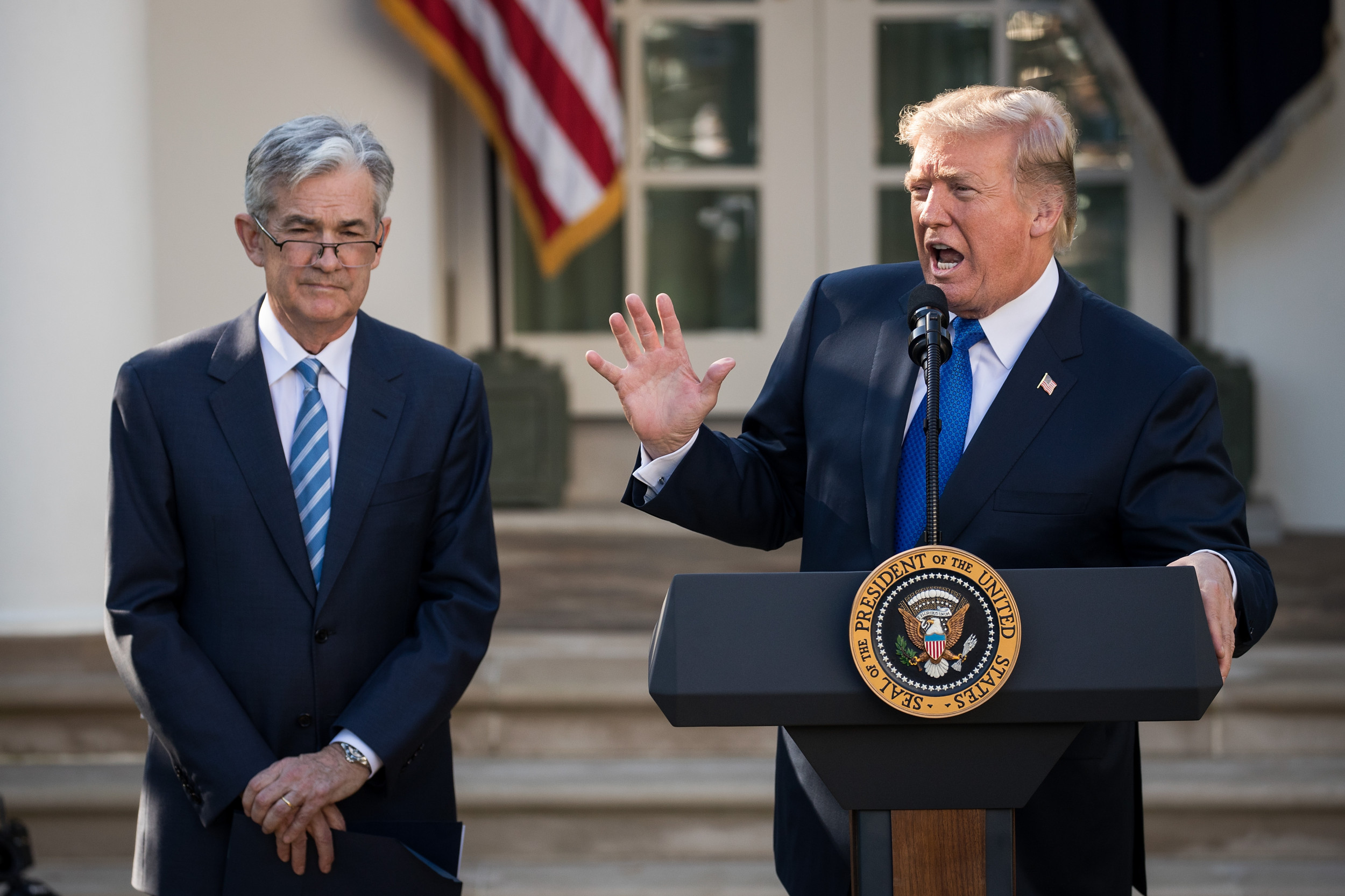It was Donald Trump who, back in 2017, stood in the White House Rose Garden and introduced his pick for Federal Reserve chair as a “wise steward of the economy.” But the relationship between Trump and Jerome Powell quickly soured, culminating this week with Trump floating the idea of firing Powell—before saying on Wednesday that he was unlikely to do so.
During a brief exchange with reporters on Wednesday, Trump said, “I don’t rule out anything, but it’s highly unlikely [that I’ll fire him]—unless he has to leave for fraud,” after several reports revealed that he had asked Republican lawmakers whether he should oust Powell. Markets reacted swiftly: the dollar weakened, Treasury yields rose, and stocks fell to a two-week low, prompting Trump to quickly walk back his comments.
For Trump, the alliance between himself and “Jay” — as he called Powell during the 2017 Rose Garden announcement — has steadily unraveled. What began as a warm endorsement of Powell’s “strength and wisdom” turned into a years-long feud over interest rates, with Trump lambasting the Fed chair as a “moron” and a “numbskull” for refusing to lower borrowing costs on his timeline.

Drew Angerer/Getty Images
For Trump 2.0, the dynamic has shifted dramatically. This time, the president has surrounded himself almost entirely with loyalists who are far more willing to implement his agenda than some of the officials who resisted him during his first term. Compared to 2017, when Trump was still learning to navigate Washington and frequently clashed with his own appointees, his current administration has encountered little internal pushback.
Yet Powell remains an outlier — a vestige of that earlier period when Trump was still assembling his team and had not yet consolidated power over the GOP and the machinery of government. Powell’s independence and the Federal Reserve’s institutional resistance to political pressure have made him, in effect, the last major obstacle to Trump’s ambitious plans for his next four years.
Trump, who campaigned on reducing prices during his bid to return to the White House, insists the economy is under control and has suggested that anyone smart enough could handle the role of Fed chair.
“I’m only interested in low-interest people,” Trump told reporters. “It’s not a tough job, to be honest, assuming you’re smart,” he said. “It might be one of the easiest jobs I’ve ever seen.”
What would it actually mean — legally, economically, and institutionally — if Trump followed through on his threat to remove Powell? Newsweek spoke to economists and political scientists to unpack the risks and the potential fallout.
What Would Happen If Trump Fired Powell?
Trump’s suggestion that he might remove Powell has sparked intense debate over what such a move would mean — legally, economically, and politically — at a time when inflation remains stubborn and borrowing costs are already high.
“The administration sees Powell as a weakness, and the problem is the midterms are coming,” said Todd Belt, director of the Political Management program at George Washington University. He noted that Trump’s team increasingly views Powell as a liability heading into a crucial electoral season, especially with prices still elevated and interest rates at two-decade highs.
At issue is the Federal Reserve’s long-standing independence from the White House. While presidents appoint Fed chairs and can influence monetary policy through fiscal decisions and nominations, the law only allows a sitting chair to be removed “for cause,” a phrase traditionally interpreted to mean misconduct or incapacity — not mere disagreement over policy.

Photo by Brendan SMIALOWSKI / AFP) (Photo by BRENDAN SMIALOWSKI/AFP via Getty Images
Trump’s allies have floated the idea of using the over-budget renovation of the Fed’s headquarters as a pretext, but legal scholars have said such a move would almost certainly be challenged in court.
“The real danger here is that it politicizes something that should never be political,” Belt said. “We have rules that guarantee separation between what’s political and what’s for the public good. The Fed was designed to be independent so the president can’t manipulate monetary policy for short-term gain.”
Trump’s frustration stems largely from Powell’s refusal to cut rates quickly enough to boost growth ahead of the election. The Fed has kept its benchmark rate at 4.25–4.5 percent this year, with Trump arguing the rate is “at least 3 points too high.”
“Trump sees other central banks cutting rates and wonders why the Fed isn’t doing more for him politically,” Belt added. “But the Fed’s mission is to manage inflation and employment for the long term, not to serve the president.”
Trump believes that replacing Powell with a loyalist — reportedly Treasury Secretary Scott Bessent — would result in lower borrowing costs for consumers and businesses and a stronger economy just in time for the midterm cycle. But that plan ignores a basic economic tension: cutting rates too aggressively risks reigniting inflation, which already remains above the Fed’s 2 percent target.
How Markets Could React
The idea of firing Powell sent shockwaves through markets on Wednesday, with the dollar falling, Treasury yields rising, and stocks slipping — reflecting investor concern that a politically compromised Fed would lose credibility. That reaction underscores why financial markets value stability at the central bank: confidence that interest-rate decisions are made based on data, not presidential whim.
“One thing financial markets like is consistency,” Belt said. “If Trump were to force out the Fed chair, it injects more chaos and unpredictability into the economy. Businesses hesitate to hire, investment slows. It’s bad for regular Americans because businesses don’t like to reinvest and create new jobs if they don’t know what the market is going to look like.”

Spencer Platt/Getty Images
Lawrence White, an economics professor at NYU’s Stern School of Business, noted that while presidents have influenced who leads the Fed, forcibly removing a sitting chair mid-term would cross a line unseen since the Carter administration, when the Fed chair and Treasury secretary quietly switched roles in an awkward, backroom deal.
“This isn’t just about one man,” White said. “It’s about preserving the integrity of the institution. Presidents have always appointed chairs they expect to align with their priorities — that’s normal. But leaning on Powell to vacate his seat? That’s messy and undermines confidence in the Fed.”
Rebecca Patterson, a former investment strategist, said global investors would likely see a sudden firing as evidence the Fed was no longer independent. That could drive up the cost of U.S. debt and ripple through the economy.
“If investors perceive the Fed’s independence is being reduced, they’ll demand higher yields to compensate for additional risk in U.S. government debt,” she said. “That makes mortgages and auto loans more expensive, and growth slows.”
As Belt put it: “Forcing out Powell and replacing him with a ‘yes-man’ sends a message that the U.S. economy is just another arm of the White House.”
(Except for the headline, this story has not been edited by PostX News and is published from a syndicated feed.)

